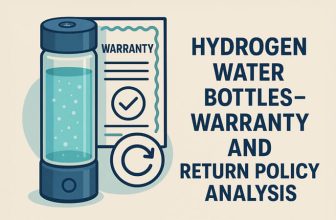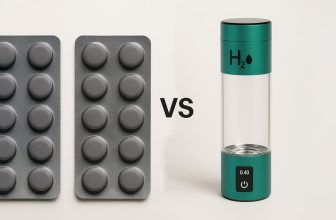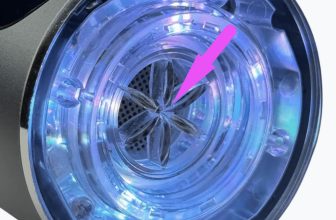The Ultimate Guide to Choosing a Hydrogen Water Generator
Water is the essence of life and a vital source of energy. We all need it and are advised to consume ample quantities of alkaline water to maintain good health. As a result of this common wisdom, it seems logical to assume that if drinking more water is beneficial, then consuming additional hydrogen water must also be advantageous for our food intake.
However, the world of water is no longer as simple as it once seemed, with clever marketing ploys and misinformation making it difficult to navigate the murky waters in search of optimal health benefits.
You have probably seen Gary Brecka and Joe Rogan praising the benefits of hydrogen water or the smile of the president of UFC Dana White while sipping from his hydrogen water generator.
This article aims to provide an in-depth understanding of hydrogen water generators and the various technologies used in their production. We will explore the science behind hydrogen water and the different methods of generating it, focusing on the cutting-edge technologies that power hydrogen water generators. These machines use advanced PEM technology to produce high-quality hydrogen water while consuming minimal energy.
Furthermore, we will delve into the world of hydrogen water products, comparing and contrasting the technologies used in hydrogen water generators, magnesium tablets, and ready-to-drink hydrogen water. Our investigation will scrutinize the quality and effectiveness of these products and expose the tactics employed by affiliate marketers, who may be more interested in their commissions than in your well-being.
By the end of this article, I hope you will have gained a solid understanding of hydrogen water generators and the diverse technologies involved in their production, including new SPEm/SPE technology. With this knowledge, you can make the best health and lifestyle choices while also being mindful of energy consumption. So, without further ado, let’s dive into the fascinating world of hydrogen water generators and begin our exploration of their true potential.
TABLE OF CONTENTS
Introduction
the natural presence of hydrogen in our bodies
THE BASICS
cellular hydration and hydrogen gas
gas concentrations: do they matter?
Measuring Hydrogen Concentration
Factors Affecting Measurement Accuracy
THE TRADE-OFF
Hydrogen Water generators
separating hydrogen from oxygen
product generation comparison table
hydrogen water pitchers
water vortex, aka magnetic water — fact or fiction?
aluminum pouches
drinking h2 daily — what is the cost?
hydrogen inhalation
hydrogen water tablets
hydrogen products comparison table

The Natural Presence of Hydrogen in Our Bodies
Hydrogen gas is naturally produced in the cells of our bodies through the digestive process. Certain dietary carbohydrates, such as fiber or complex sugars, are fermented by bacteria in the large intestine (colon), producing hydrogen gas through a process known as colonic hydrogen fermentation.
The production of hydrogen gas in the intestines is a natural physiological occurrence that happens to everyone to varying degrees. Factors such as diet, gut microbiota composition, and individual gut physiology can influence the amount of hydrogen gas produced. However, some research suggests that many cells in the gut may act as a generator for hydrogen gas production, and the delivery of certain nutrients may also play a role.
Once produced in the intestines, hydrogen gas is absorbed into the bloodstream and expelled through the lungs during respiration. Typically, the concentration of dissolved hydrogen gas in the human bloodstream is quite low, with arterial blood concentrations in the range of nanomoles per liter (nmol/L) or lower. In contrast, concentrations in venous blood may be even lower.
A speculative scenario suggests that the presence of hydrogen-producing bacteria in the intestines, combined with higher concentrations of dissolved hydrogen gas in the bloodstream, could contribute to improved health and longevity in some individuals. The human gut hosts trillions of microorganisms, including bacteria, which form a complex ecosystem known as the gut microbiota. Some bacteria produce hydrogen gas as a metabolic byproduct, which can dissolve in the surrounding tissues and bloodstream.
In this hypothetical situation, individuals with diverse and healthy gut microbiota, including hydrogen-producing bacteria, may have higher concentrations of dissolved hydrogen gas in their bloodstream. This could offer increased antioxidant properties due to hydrogen gas’s potential antioxidant effects. As a result, these individuals might experience reduced oxidative stress and inflammation, contributing to less age-related diseases.
However, factors such as antibiotic use, poor diet, stress, or other environmental factors can disrupt the alkaline gut microbiota generator in some individuals. This disruption could alter the composition and activity of gut bacteria, potentially leading to decreased hydrogen gas production in the intestines.
In this scenario, individuals with fewer hydrogen-producing bacteria in their gut may have lower concentrations of dissolved hydrogen gas in their bloodstream.
It is important to note that while the relationship between gut bacteria, hydrogen gas production, and health outcomes is complex, technology has advanced to create a new delivery system. The optimal composition and activity of gut bacteria for potential health benefits, if any, are still being researched. Furthermore, genetics, diet, lifestyle, and environmental factors play crucial roles in overall health and longevity.
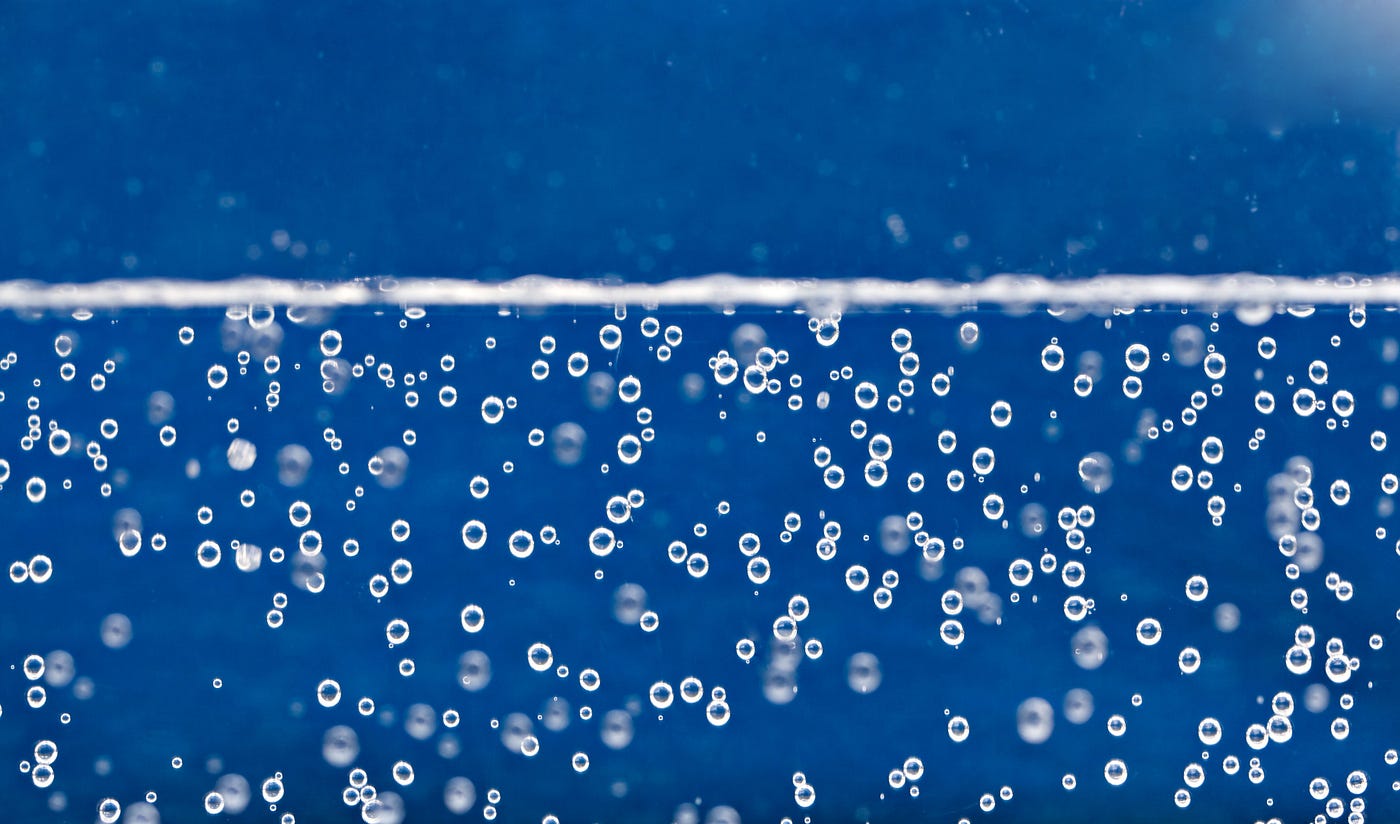
The Basics
Hydrogen (H2) is a naturally occurring gas with numerous health benefits. Research suggests it acts as a selective antioxidant, potentially reducing oxidative stress and inflammation linked to various diseases and health issues. To harness these benefits, there are two primary ways to introduce hydrogen into our bodies: by infusion or by inhalation.
Infusion: You may already be familiar with this concept through carbonated beverages, which involve infusing carbon dioxide into a liquid. Similarly, hydrogen gas can be dissolved in water, creating hydrogen-rich water. This method relies on the digestive system to absorb the dissolved hydrogen and introduce it into the bloodstream, where it can exert its health benefits.
Inhalation: A more straightforward approach, inhalation means breathing in hydrogen gas. Specialized technology and delivery systems allow for a controlled mixture of hydrogen and air to be delivered through a nasal cannula, allowing the gas to enter the bloodstream directly through the lungs. This method is typically employed in clinical settings or for specific therapeutic purposes.
Three product types on the market primarily rely on the infusion technology method to deliver hydrogen to consumers: hydrogen water generators, magnesium tablets, and ready-to-drink hydrogen water.
In this article, we will delve into the specifics of each product type, examining their unique features, effectiveness, and overall value for those seeking the health benefits of hydrogen. From advanced technology to a simple water bottle, there are various ways to enjoy the advantages of hydrogen. Whether it’s a water maker or a generator, you can choose the best option that suits your lifestyle.
Hydrogen water generators: These machines are designed to produce hydrogen-rich water through electrolysis or other chemical processes. The resulting hydrogen-rich water can be stored in a glass or bottle for convenient consumption.
Magnesium tablets: When added to water, these tablets react with the liquid to release hydrogen gas, which can be efficiently produced using a generator or machine technology. The resulting hydrogen water quality is worth investigating, and any potential drawbacks or risks associated with using magnesium tablets should be considered.
Ready-to-drink hydrogen water: Pre-packaged and sealed in a bottle to maintain the hydrogen content, these products offer a convenient way to consume hydrogen water without the need for a generator or machine. We will assess the quality, effectiveness, and value of ready-to-drink hydrogen water technology, comparing it to other available options.

Cellular Hydration and Hydrogen Gas
An emerging area of scientific interest is the role of hydrogen gas in cellular hydration. While most research on hydrogen gas has focused on its potential antioxidant properties, there is growing evidence that it may also contribute to cellular hydration.
Cellular hydration, or the proper balance of water inside and outside cells, is essential for various cellular processes such as cell metabolism, enzyme activity, signal transduction, and overall cellular function. Optimal cellular hydration is crucial for the health and functioning of cells, tissues, organs, and the entire body. Drinking hydrogen-rich water can help make hydrogen content more accessible to the body’s cells, promoting better cellular hydration.
Hydrogen gas possesses unique physicochemical properties that may contribute to cellular hydration. As a tiny molecule, hydrogen gas can quickly diffuse across cell membranes, including the lipid bilayer, impermeable to most other molecules. This means hydrogen gas has the potential to penetrate cells and directly interact with cellular structures and processes.
One proposed mechanism by which hydrogen gas may contribute to cellular hydration is its ability to scavenge harmful reactive oxygen species (ROS) that can accumulate inside cells. ROS are byproducts of cellular metabolism and can cause oxidative stress, leading to cellular damage and dysfunction. Hydrogen gas may help reduce oxidative stress and promote cellular health by scavenging ROS, contributing to optimal cellular hydration.
The reaction between hydrogen gas and ROS serves as a generator of water, a vital component for cellular hydration essential for various physiological processes in the body.
Another proposed mechanism involves hydrogen gas’s ability to modulate cellular signaling pathways. Hydrogen gas has been shown to affect various signaling molecules, including proteins, enzymes, and transcription factors, which regulate cellular processes. These processes include water transport channels called aquaporins, playing a pivotal role in cellular hydration. Hydrogen gas has been shown to regulate the expression and activity of aquaporins, potentially influencing cellular water balance and hydration status.
Gas Concentrations: Do They Matter?
The solubility of different gases varies greatly when it comes to dissolving gases in water. The extent to which a gas dissolves in water depends on several factors, such as the nature of the gas, temperature, pressure, and the presence of other dissolved substances in the water. Molecular hydrogen can be dissolved in water, making hydrogen content a possibility in drinking hydrogen water.
Gases like oxygen (O2) and carbon dioxide (CO2) exhibit relatively high solubility in water. Oxygen dissolves in water and is essential for aquatic life, while carbon dioxide forms carbonic acid when dissolved in water, which can affect the water’s pH and acidity.
On the other hand, gases like nitrogen (N2) and noble gases such as helium (He) and neon (Ne) demonstrate low solubility in water. These gases pass through water and escape into the atmosphere without significantly dissolving.
Gas solubility in water is also affected by factors like temperature and pressure, which can make hydrogen content in portable hydrogen bottles unstable. Generally, gas solubility decreases as temperature rises and increases as pressure rises.
Hydrogen gas (H2) is relatively insoluble in water. Under standard temperature and pressure (STP), hydrogen gas has a maximum solubility of about 0.0016 grams in 1 liter of water. This indicates that only a minimal amount of hydrogen gas will dissolve in water under normal atmospheric conditions.
Typically, gas solubility decreases with increasing temperature and increases with higher pressure. This is why devices that make hydrogen content exceed the standard of 1.6 ppm operate under pressure. Specialized rechargeable portable glass hydrogen water generator bottles have been designed to reach concentrations up to 5.5 ppm, making it easier for people to have a portable hydrogen water maker on the go.
Hydrogen gas concentration plays a crucial role in determining its therapeutic effects, which can be achieved using a generator or water bottle for delivery. Studies have shown that the concentration of hydrogen gas can impact its effectiveness in various biological and medical applications, earning it stars in the field of alternative medicine.
Research and clinical studies investigating the potential therapeutic effects of hydrogen gas from a generator have demonstrated more potent antioxidant and anti-inflammatory effects with higher doses.
Lower concentrations may still provide beneficial effects but to a lesser degree. The specific concentration of hydrogen gas required for therapeutic effects may depend on factors such as the target disease or condition, treatment duration, and mode of administration.
In conclusion, the concentration of hydrogen gas in water is a crucial factor to consider when evaluating its potential therapeutic benefits. As we have explored in this chapter, gas solubility, temperature, and pressure play significant roles in determining the concentration of hydrogen gas in water.
Understanding these factors is essential when choosing a hydrogen water generator or other products.
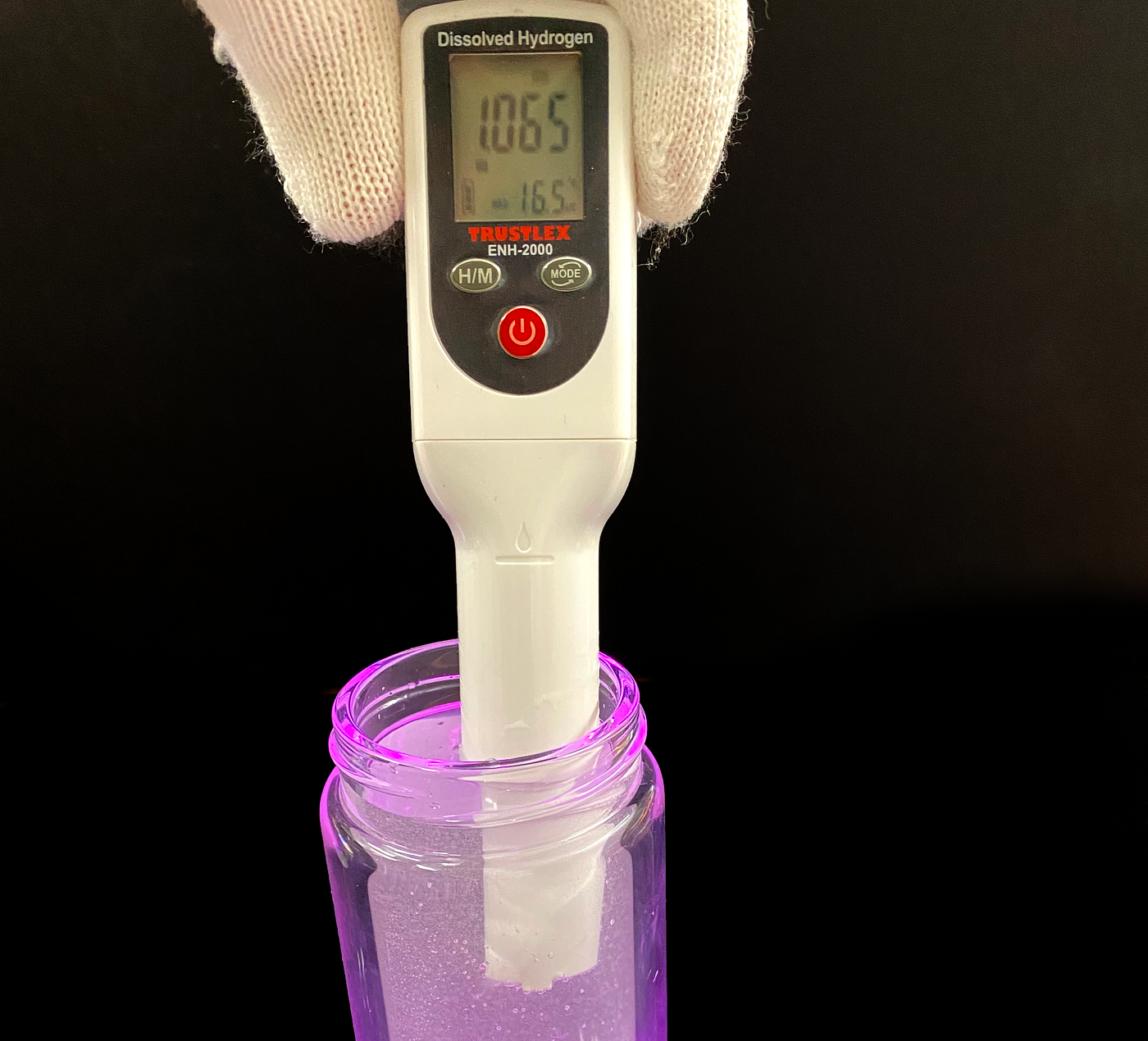
Hydrogen Water Testing with Blue Drops Reagent
Accurate measurement of hydrogen water concentration is crucial for ensuring the effectiveness and reliability of hydrogen water generators and other hydrogen delivery methods.
One widely used technique for measuring dissolved hydrogen gas concentrations is the blue drops reagent test, also known as the methylene blue reduction test.
This chapter will discuss the principles behind the blue drops reagent test, common pitfalls encountered by users, and detailed instructions for obtaining accurate measurements of hydrogen concentrations.
Neither the reagent nor the hydrogen meters will provide an accurate reading of the hydrogen concentrations you are consuming. The good news is that you are likely getting more hydrogen from your generator than the test shows, as bigger bubbles not completely dissolved in the water will also be ingested but may not react with the measuring equipment.
In conclusion, there is no out-of-the-lab solution to measure hydrogen concentrations accurately. Do not rely too heavily on these tests, as many factors can impact the results, from the preparation of the hydrogen water to the measurement process itself.
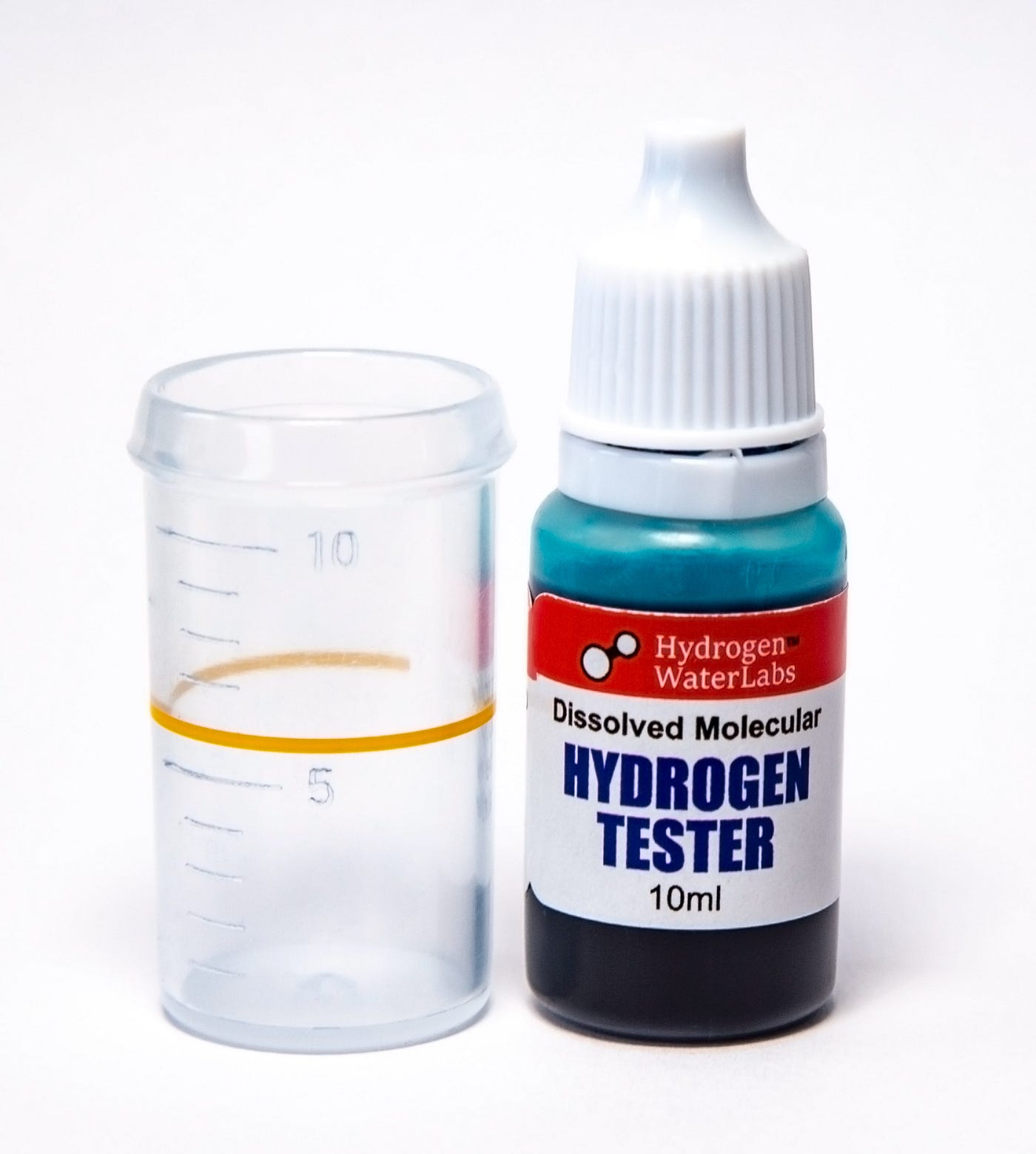
H2 Testing Procedure
Collect a 6 mL water sample immediately after producing the hydrogen water using a generator.
Add 5–6 drops of blue drops reagent to the water sample.
Stir gently with a toothpick instead of shaking the water to avoid releasing hydrogen gas from the water.
Storage and Handling of Blue Drops Reagent
Store the reagent in a cool, dark, and dry place. It is sensitive to temperature, light, and oxidation.
Do not leave the dropper bottle open for long, as it can affect the reagent’s effectiveness. The shelf life of these reagents could be a lot longer.
The high cost of hydrogen reagents, used as a generator for methylene blue, is due to the use of nano-platinum as a catalyst. Nano-platinum particles are expensive and this affects the delivery of hydrogen to the water bottle.
Challenges in Measuring Proper Concentration
Hydrogen water escapes quickly from the tested water.
Factors such as pouring the water from a distance, using warm water, or shaking the water can release the gas much quicker — every second counts when testing, as hydrogen gas escapes rapidly from the sample.
Preparation of Hydrogen Water Sample
Ensure the hydrogen generator has a fully activated membrane for optimal delivery. Fill it to the top with cold water and screw the cap tightly to minimize air and create higher pressure (if the device is pressure-resistant). Run several cycles to achieve the highest concentrations.
Do not test the hydrogen concentration on the first day of delivery when you purchase a generator. Membranes improve their performance over time, so it’s best to test after continuous use for several days.
The Time/Concentration/Volume Trade-off
A common complaint among hydrogen water generator shoppers is that the devices and their containers often need to be more significant to meet their daily water consumption needs. However, with reliable delivery services, customers can conveniently receive the required amount of hydrogen water without worrying about the device’s size.
In this chapter, we will explain the reasoning behind this decision by manufacturers to offer rechargeable portable glass hydrogen water generator bottles and portable hydrogen water ionizer machines, and why bigger hydrogen water containers aren’t necessarily better.
In the realm of hydrogen water generators, there is an important relationship to consider involving the delivery time required for hydrogen generation, the concentration of hydrogen gas, and the volume of water being treated. This relationship, often called the Time/Concentration/Volume Trade-off, plays a crucial role in understanding the efficiency and performance of hydrogen water generators.
If you desire a higher concentration of hydrogen gas in your water, you may need to treat a smaller volume of water, which can be generated more quickly for delivery. Conversely, achieving the desired hydrogen gas concentration may take longer if you need to treat a larger volume of water for delivery.
Understanding this trade-off is crucial when selecting a hydrogen water generator or determining the optimal operating conditions for your device. By considering the Time/Concentration/Volume/ Delivery Trade-off, you can make informed decisions about the efficiency and effectiveness of hydrogen water generators in terms of delivering the hydrogen to your body, ultimately maximizing the potential benefits of hydrogen water for your health and well-being.
Less Water
When the volume of water being treated is reduced, there is less water delivered to the hydrogen gas generator. Consequently, the concentration of hydrogen gas in the generator increases. This is because the same amount of hydrogen gas is now dissolving in a smaller volume of water, resulting in a higher concentration.
More Hydrogen
With a higher concentration of hydrogen gas generated by the delivery system in the water, the potential health benefits may be more pronounced due to the increased presence of hydrogen molecules. This enhanced concentration delivered by the generator is often considered advantageous in terms of therapeutic effects.
Less Time
As the volume of water decreases and the concentration of hydrogen gas increases, the delivery time required to generate hydrogen water is reduced. This is because the hydrogen gas generation process becomes more efficient, as there is less water for the hydrogen to dissolve. In other words, it takes less time to achieve the desired concentration of hydrogen gas in a smaller volume of water.
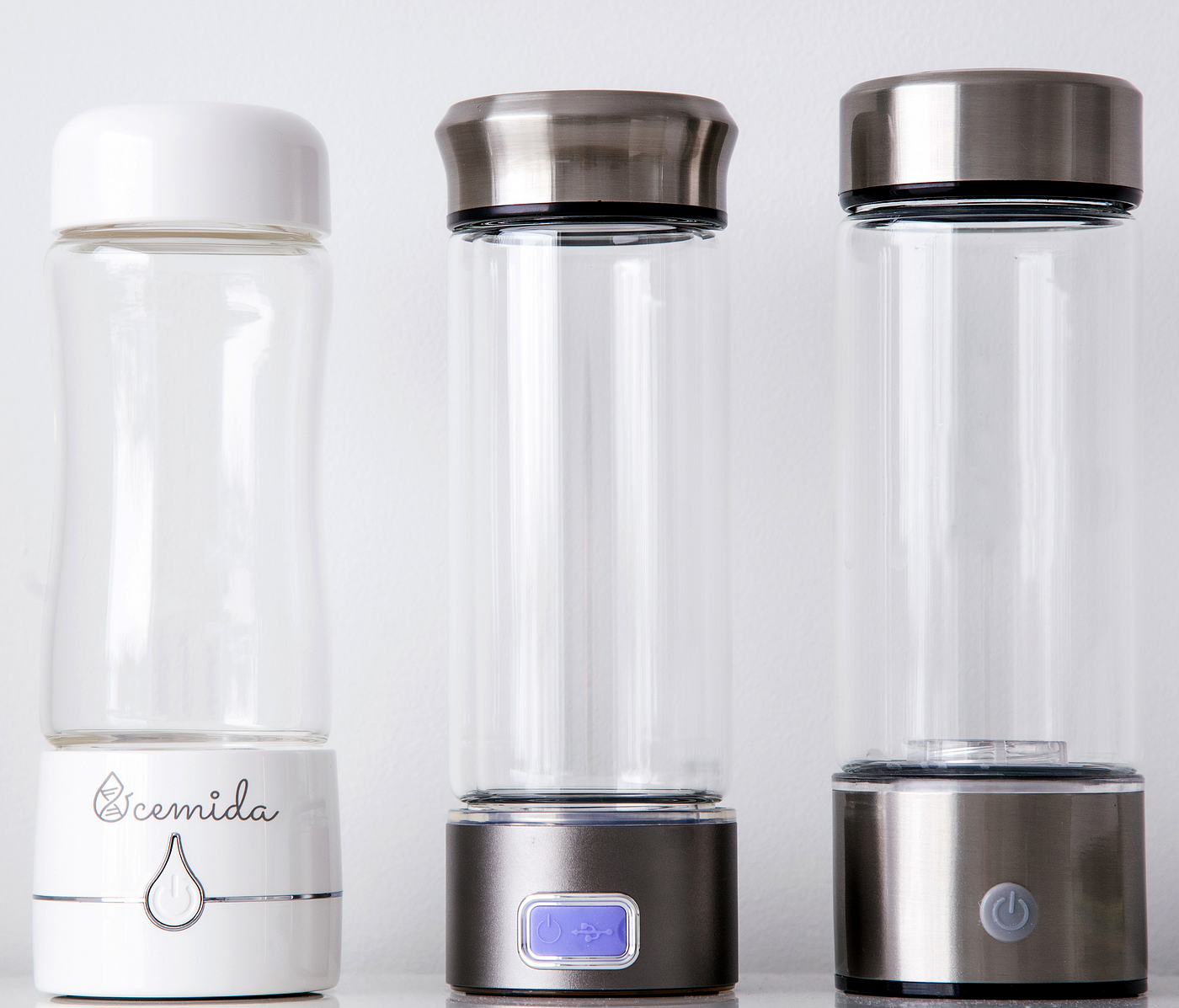 Ocemida, LevelUpWay, and Ionbottles hydrogen water bottles
Ocemida, LevelUpWay, and Ionbottles hydrogen water bottles
Hydrogen Water Generators – Understanding Technology and Components
Hydrogen water generators are electrical devices that utilize the process of electrolysis to break down water molecules into hydrogen and oxygen gas. By producing hydrogen-rich water, these devices offer various health benefits due to hydrogen’s antioxidant and anti-inflammatory properties. Hydrogen water is produced by passing electricity between two electrodes, with or without a proton exchange membrane (PEM).
A proton exchange membrane is a selectively permeable barrier that separates hydrogen and oxygen gases during the electrochemical process of splitting water into hydrogen and oxygen. The PEM allows only protons (H+) to pass through while blocking the passage of electrons and other gases. It is placed between the anode and cathode, the two electrodes used in the electrolysis process for efficient delivery.
When an electric potential is applied across the electrodes, water molecules at the anode are broken down into oxygen gas, protons, and electrons. The PEM then allows the delivery of protons to pass through while blocking the passage of electrons and other gases, including oxygen. At the cathode, hydrogen ions and electrons combine to form hydrogen gas (H2), which is then dissolved into the water, creating hydrogen-rich water for delivery.
Using PEM technology in hydrogen water generators ensures the delivery of high-purity hydrogen, as it prevents the mixing of hydrogen and oxygen gases. This results in a safer and more efficient device, offering superior health benefits compared to generators without PEM delivery technology.
Hydrogen water generators can be used for the delivery of hydrogen-rich water in various settings, such as homes, offices, and gyms. Regular consumption of hydrogen water is associated with numerous health benefits, including reduced inflammation, improved athletic performance, and enhanced cellular health. By incorporating a hydrogen water generator into your daily routine for delivery, you can experience the advantages of this cutting-edge technology for yourself.
 6th, 3rd, and 1st generations of hydrogen water generators.
6th, 3rd, and 1st generations of hydrogen water generators.
Evolution of Hydrogen Water Generators – A Generational Overview
Hydrogen water generators have evolved significantly since their introduction to the market. This chapter overviews the various generations of hydrogen water generators, highlighting their technological advancements and key features.
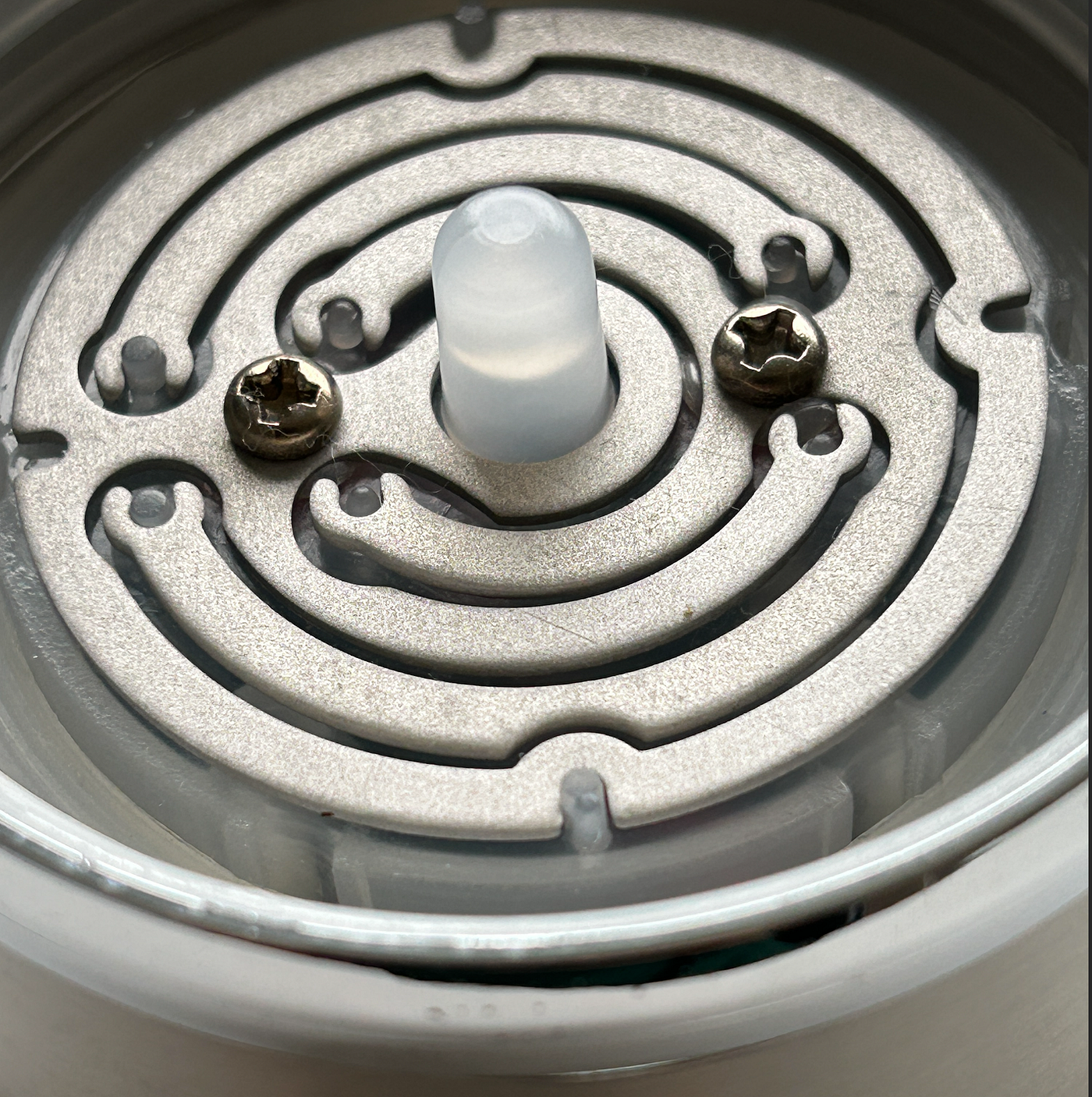 1st generation
1st generation
First Generation
The first generation of hydrogen water generators was characterized by their rudimentary design, featuring stainless steel electrodes without a proton exchange membrane (PEM).
These early models of hydrogen water generators were less efficient and often prone to issues, such as the formation of harmful byproducts during electrolysis. These portable hydrogen water bottle generators are no more allowed to sell in the USA. However, with the advancement of technology, newer models of drinking hydrogen water generators have been developed that are more effective and safer for consumption.
First-generation hydrogen water devices can be easily identified by their electrode design. Unlike more advanced models, these devices do not feature Proton Exchange Membranes (PEM) or electrodes with holes. The electrodes typically have a basic appearance with visible bolts, indicative of the early stage of development in hydrogen water technology. However, their delivery system may still be effective in producing hydrogen-infused water.
These first-generation hydrogen water bottle generators are usually priced at $40 or less, reflecting their simpler design and lower performance capabilities than later generations.
 The Piurify hydrogen pitcher is a 2nd generation device.
The Piurify hydrogen pitcher is a 2nd generation device.
Second Generation
The second generation of hydrogen water generators saw improved electrode materials, utilizing titanium and iridium electrodes instead of stainless steel. However, these models still lacked a PEM, which limited their efficiency and overall performance in delivering hydrogen water to users.
Third Generation
In the third generation, hydrogen water generators incorporated titanium electrodes and an ionic membrane for improved delivery of hydrogen production during electrolysis. This marked a significant step forward, as the ionic membrane helped improve hydrogen production efficiency during electrolysis.
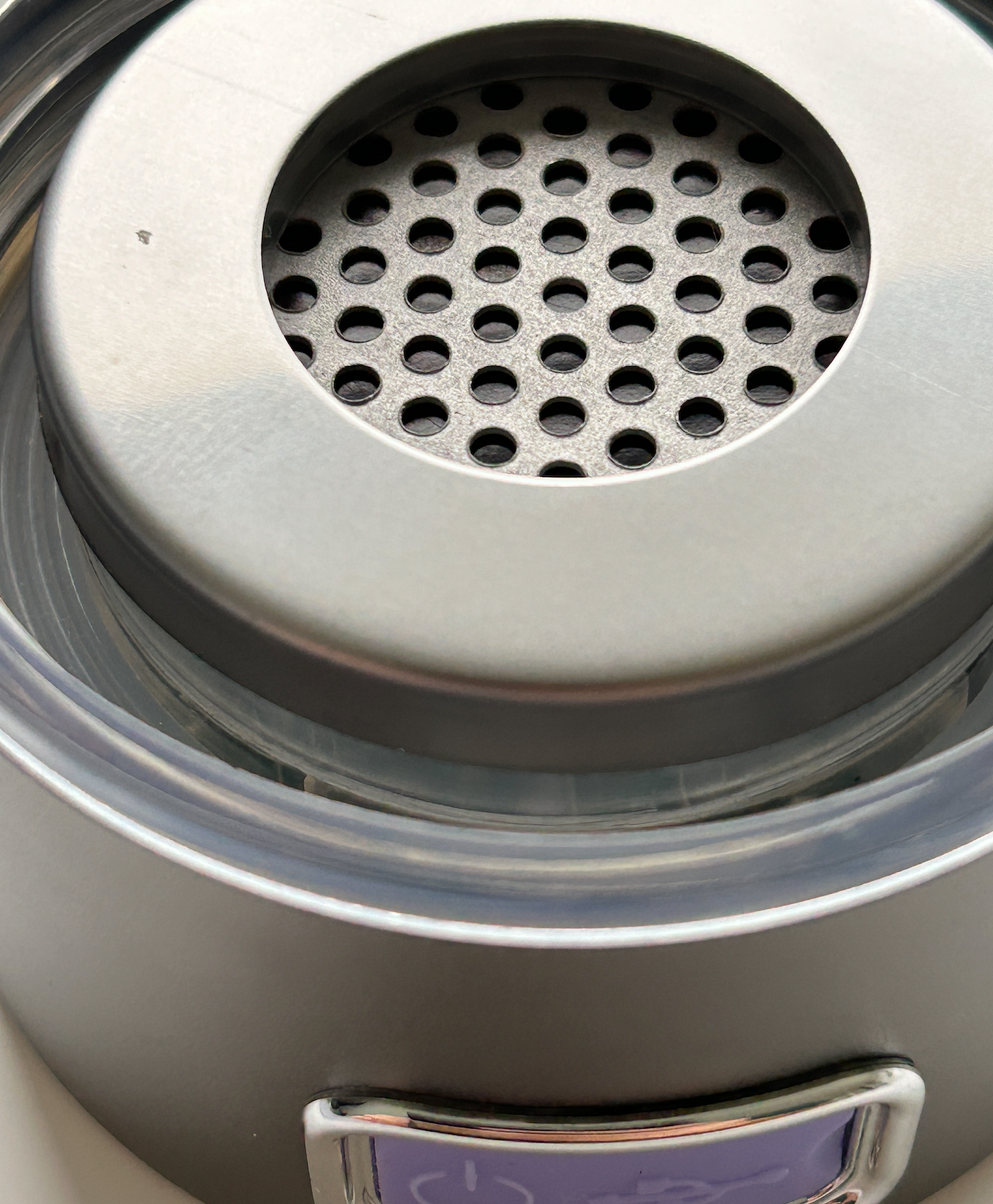 The LevelUpWay and Ionbottles brands are examples of 4th generation devices that use hydrogen water generator technology for delivery.
The LevelUpWay and Ionbottles brands are examples of 4th generation devices that use hydrogen water generator technology for delivery.
Fourth Generation
The fourth generation of hydrogen water generators featured platinum-plated electrodes and a PEM, improving the delivery of efficient and high-performance devices that produce a higher quality of hydrogen water.
Platinum-plated titanium electrodes are an excellent choice for electrolysis due to their non-reactive nature, which ensures no delivery of metal ions or water contamination during the process. These electrodes are highly durable and do not corrode or degrade quickly, making them ideal for harsh electrolytic environments where delivery of impurities is a concern. Additionally, platinum electrodes do not form oxide layers or other compounds that could dissolve and cause the delivery of metal ions into the solution.

Separating the Hydrogen from the Oxygen
A crucial aspect to consider when choosing a hydrogen water generator is the presence of a separate chamber for oxygen and other byproducts delivery. Devices that use a proton exchange membrane (PEM) but do not have a separate chamber can still produce undesirable byproducts, such as chlorine and ozone, during the electrolysis process. These byproducts can mix with the hydrogen water and pose potential health risks.
Many users unaware of delivery issues may experience headaches and an unpleasant taste in their hydrogen water. This can ultimately diminish the benefits of consuming hydrogen water, as these byproducts can negatively impact the user’s experience and health.
To avoid delivery problems, it is advisable to opt for hydrogen water generators with a PEM and a separate chamber for oxygen and other byproducts. This design ensures that the delivery of hydrogen and oxygen gases are effectively separated, resulting in purer hydrogen water without the risk of contamination from chlorine or ozone.
By investing in a hydrogen water generator with both a PEM and a separate chamber, users can enjoy the full benefits of hydrogen water, free from the adverse effects caused by the presence of unwanted byproducts.
Fifth Generation
Fifth-generation hydrogen water generators introduced a separate chamber for oxygen, effectively separating it from hydrogen. This design enhancement minimized the risk of cross-contamination between the two gases, resulting in a purer hydrogen gas output.
 The Ocemida brand, is known for its 6th-generation devices.
The Ocemida brand, is known for its 6th-generation devices.
Sixth Generation
The sixth and most advanced generation of hydrogen water generators incorporates platinum-plated electrodes, PEM, and a separate oxygen chamber and operates under pressure. This latest generation offers the highest efficiency, performance, and hydrogen gas purity.
THE USA-MADE DUPONT PEM IS A PATENTED NANO-TECHNOLOGY
AND CAN BE RECOGNIZED BY ITS VELVETY BLACK TEXTURE.
Variations in hydrogen water generator technology can include differences in the quality and origin of the PEM, thickness of the platinum layer, hole size on the electrodes, active electrode surface area, and the quality of the plastics used (e.g., BPA-free). The electronics, battery, and warranty can also impact the overall price, ranging from $40 for a second-generation model to $300 for a sixth-generation device.
By incorporating the latest advancements in electrode materials and PEM technology, sixth-generation hydrogen water generators ensure that the hydrogen produced is of the highest quality, free from contaminants and byproducts. The separate oxygen chamber and pressurized operation enhance the device’s efficiency and effectiveness, resulting in a superior hydrogen water experience.
For consumers seeking the best in hydrogen water technology, sixth-generation generators offer the ultimate solution regarding performance, safety, and reliability. Though they may come with a higher price tag than earlier generations, these advanced devices’ numerous benefits and features make them a worthwhile investment for those looking to optimize their health and well-being through hydrogen water consumption.
GENERATIONS COMPARISON TABLE
Here’s a table that compares the different generations of hydrogen water generators!
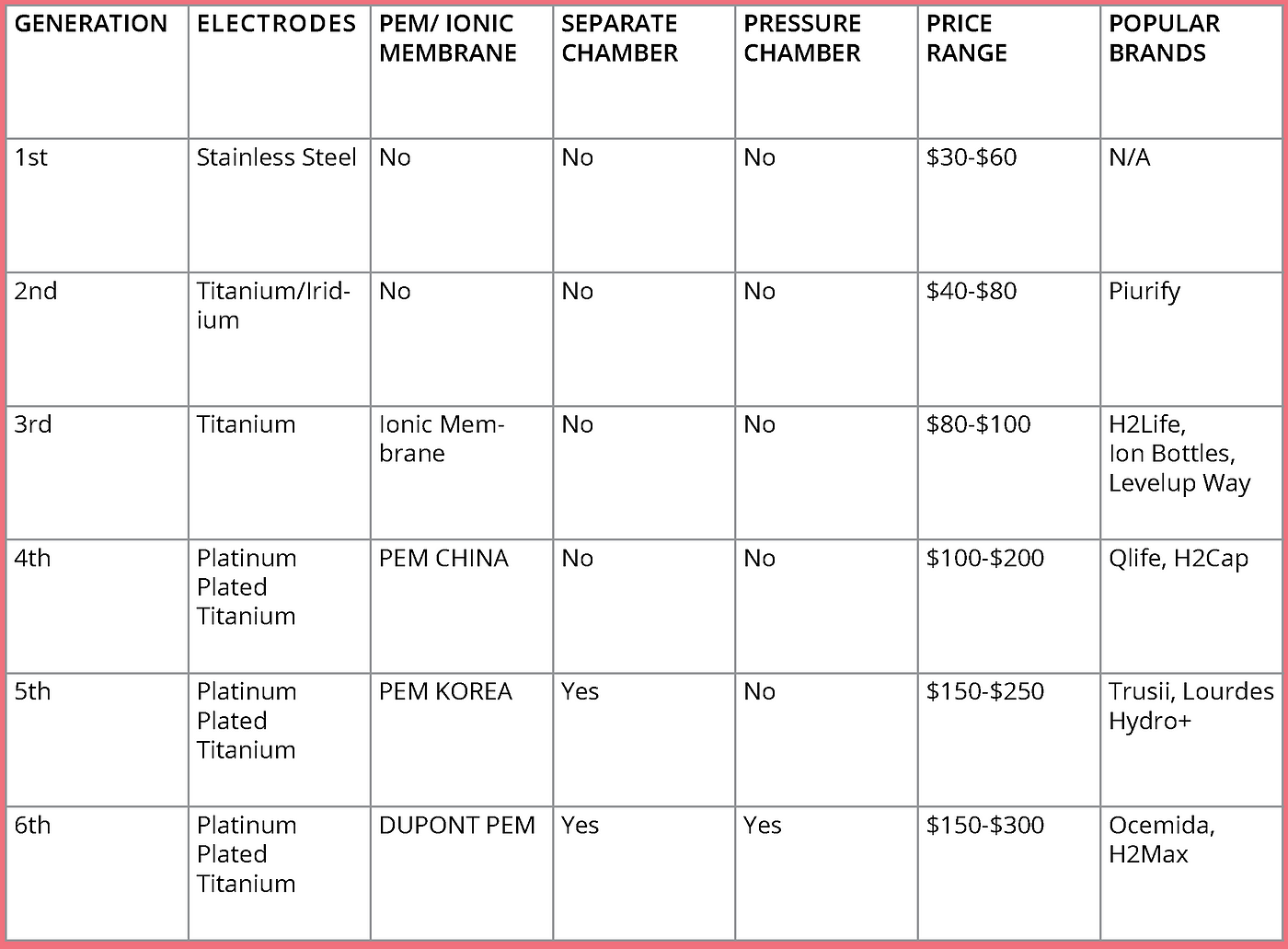 The approximate price ranges may vary depending on the specific brand, materials, and additional features. If you’re looking for a hydrogen water generator or a hydrogen water bottle generator, the prices may differ based on the brand and features.
The approximate price ranges may vary depending on the specific brand, materials, and additional features. If you’re looking for a hydrogen water generator or a hydrogen water bottle generator, the prices may differ based on the brand and features.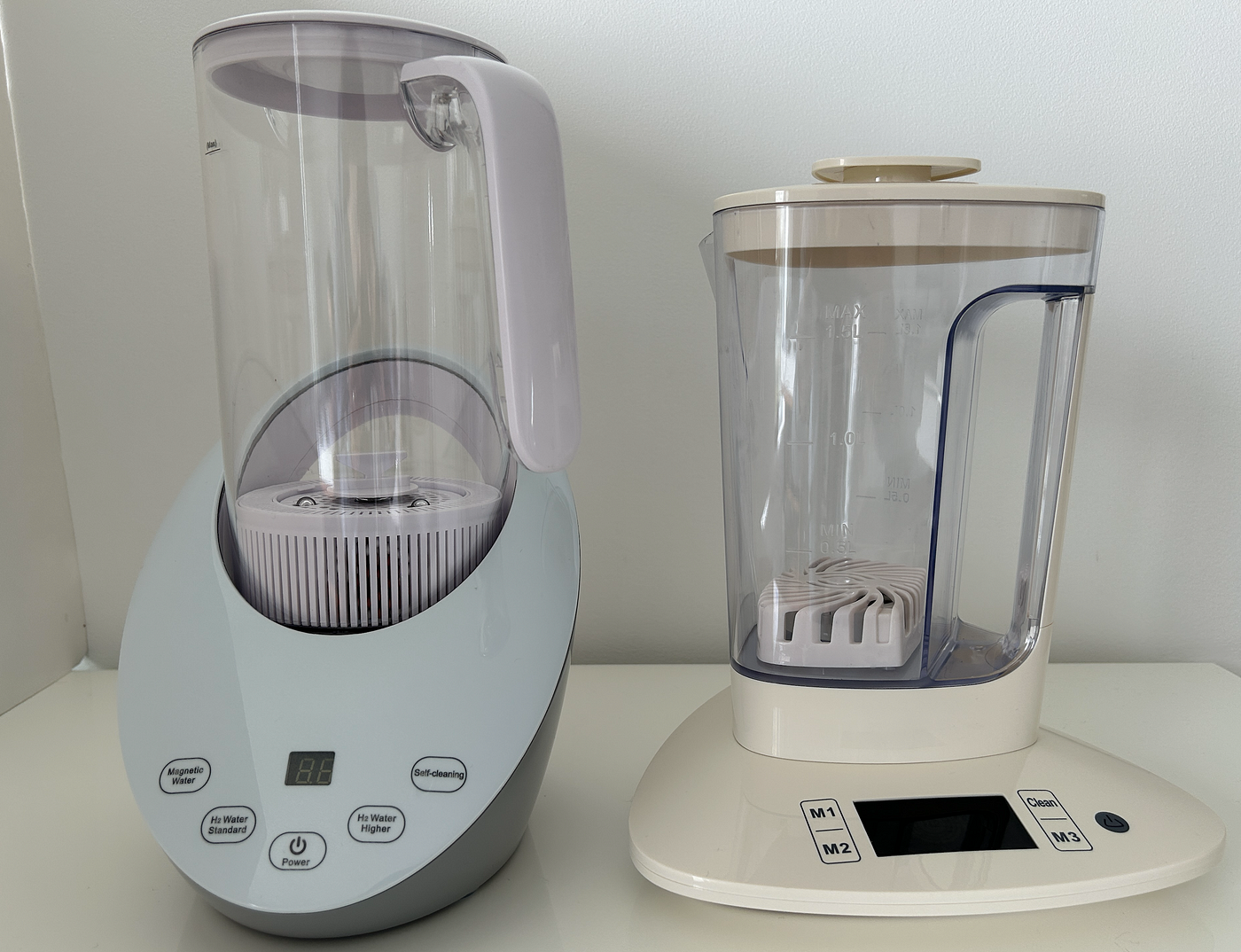
Hydrogen Water Pitchers — Features and Limitations
Hydrogen water pitchers offer an alternative to hydrogen water bottles, with key differences and potential limitations. In this chapter, we will examine the features of hydrogen water pitchers and explore their advantages and disadvantages compared to other hydrogen-generating devices.
Lower hydrogen concentration: Hydrogen water pitchers generally produce lower hydrogen concentrations than other devices, which may reduce therapeutic effects. If higher hydrogen concentrations are desired, alternative devices such as hydrogen water bottles or generators may be more suitable.
Limited portability: Unlike hydrogen water bottles, hydrogen water pitchers are not designed for portability. They are better suited for stationary use, which may not be ideal for individuals who want to enjoy hydrogen-rich water on the go.
Higher cost: Hydrogen water pitchers are generally more expensive than hydrogen water bottles. This increased cost may not necessarily translate to improved performance or effectiveness, so customers should carefully consider their options before purchasing.
Storage space: Hydrogen water pitchers require more storage space than hydrogen water bottles due to their larger size. This may be a factor for those with limited storage space in their kitchens or homes.
Limited lifespan of dissolved hydrogen gas: Since dissolved hydrogen gas in water lasts only several hours, storing large quantities of hydrogen-infused water for daily consumption may not be practical. This limitation highlights the importance of choosing a device that can produce hydrogen-rich water on demand.
In conclusion, there may be better choices than hydrogen water pitchers, particularly those seeking higher hydrogen concentrations, portability, or cost-effectiveness.
Alternative options, such as hydrogen water bottles or generators, may provide more suitable solutions for individuals seeking the potential health benefits of hydrogen-rich water.
 The Piurify Pitcher with “Magnetic Water” / vortex feature
The Piurify Pitcher with “Magnetic Water” / vortex feature
Examining the Role of a Water Vortex in Hydrogen Retention
A water vortex is a swirling motion created in the water, often used in various water treatment devices to improve water quality. The claim that a water vortex can help with hydrogen retention in water is worth examining step by step.
A water vortex typically releases dissolved air rather than enriching the water with more air. This is because as the water spins rapidly in a vortex, it creates a low-pressure zone in the center of the vortex. This low-pressure zone causes gases such as oxygen and nitrogen dissolved in the water to be released into the air. This process is known as degassing.
Hydrogen gas solubility: The solubility of hydrogen gas in water is generally low, meaning that only a small amount of hydrogen can dissolve in water under normal conditions. Once dissolved, hydrogen gas tends to escape from the water over time, especially when the water is agitated or disturbed.
Water agitation: A water vortex, by definition, creates agitation in the water. This swirling motion can potentially cause the dissolved hydrogen gas to escape more rapidly from the water, increasing the water’s surface area and accelerating the release of hydrogen gas into the atmosphere.
Hydrogen retention: Given the nature of the water vortex and its agitative effect on water, it is unlikely that a water vortex would help with hydrogen retention in water. The opposite may be true, with the vortex causing hydrogen gas to escape more rapidly from the water due to the increased agitation.
What about a hydrogen infusion after a vortex?
A water vortex could help release dissolved air, creating more room for hydrogen gas dissolution. By agitating the water, the vortex may encourage the release of dissolved gases such as oxygen and nitrogen. Once the vortex is stopped and the water is infused with hydrogen, more hydrogen could be absorbed due to the reduced presence of other dissolved gases.
This can be demonstrated if sparkling water is placed in a pitcher with a vortex function and spun for about 5 minutes. Most of the CO2 bubbles in the water will be released into the air, causing the water to become flat.
As mentioned, hydrogenation can only occur up to around 1.6 ppm under normal atmospheric pressure. Therefore, even though the water vortex may help release some dissolved air and theoretically create more room for hydrogen dissolution, the overall difference in hydrogen concentration may be insignificant due to this inherent limitation.
In conclusion, a water vortex, sometimes called “magnetic water,” appears to be more of a marketing tactic designed to attract customers with a visually appealing feature rather than providing substantial benefits. While it might have some effect on dissolved air release, the overall impact on hydrogen gas dissolution is likely minimal due to the inherent solubility limitations of hydrogen in water under normal atmospheric conditions.
ALUMINUM POUCHES — FOR H2 WATER STORAGE
The small size of the hydrogen molecule enables it to pass through a wide range of materials, including plastics, rubber, and even glass. Some materials through which hydrogen can permeate include water bottles.
Palladium and palladium-based alloys (used in hydrogen purification)
Specific polymers, like polyethylene and polypropylene
Porous materials, such as zeolites and activated carbon
Some elastomers, like silicone rubber and fluoroelastomers
Thin metal foils or membranes, especially at high temperatures
However, hydrogen permeation is limited or occurs at a very slow rate through:
Dense metals like steel, aluminum, and copper
Glass and ceramics
Dense, non-porous polymers, such as polytetrafluoroethylene (PTFE) and polyvinylidene fluoride (PVDF), are commonly used in the manufacturing of hydrogen water generators and hydrogen water bottle generators.
Epoxy resins
Some materials can be combined or layered to create more effective barriers against hydrogen permeation.
Hydrogen water is often sold in aluminum pouches due to the material’s effectiveness in preserving the water’s hydrogen content. However, the plastic caps used on hydrogen water pouches can be a weak point regarding hydrogen gas retention. Plastic materials are generally more permeable to gases than aluminum or other metals. As a result, hydrogen gas can gradually escape through the plastic cap, diminishing the hydrogen concentration in the water.
To minimize hydrogen loss, manufacturers may use multiple layers of materials in the cap or choose specific plastic materials with lower permeability to hydrogen. Nonetheless, it’s essential to note that no material is entirely impermeable to hydrogen, and some loss is unavoidable over time.
As discussed earlier, if hydrogen water is not produced under pressure, the maximum concentration will be below 1.6 ppm.
In conclusion, aluminum pouches for hydrogen water can be an expensive option for long-term consumption:
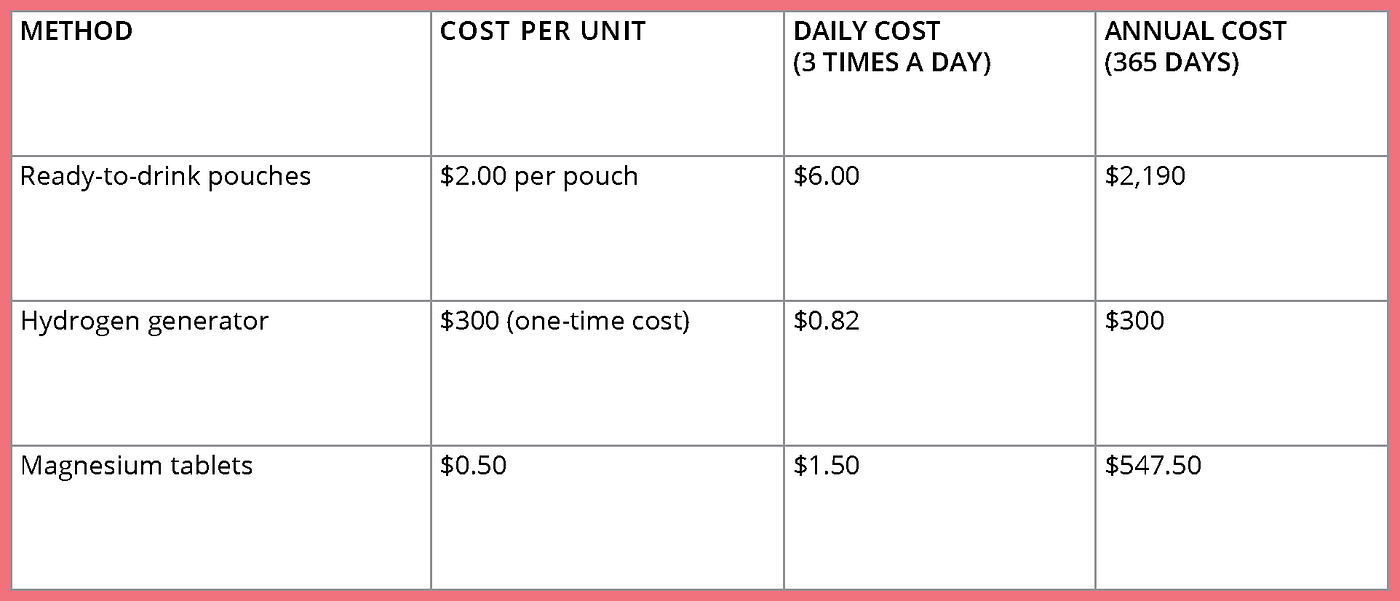 Daily cost comparison table
Daily cost comparison table
The daily cost can be calculated when considering a hydrogen generator with a one-year (365 days) lifespan and the highest possible price. The lifespan of a hydrogen generator might be much longer, reducing the daily cost.
Another disadvantage of purchasing ready-to-drink pouches is the uncertainty surrounding the water source and the amount of time these pouches have been stored in warehouses or exposed to heat and sunlight.
In summary, investing in hydrogen water stored in aluminum pouches may not be the most practical or cost-effective option for long-term use.
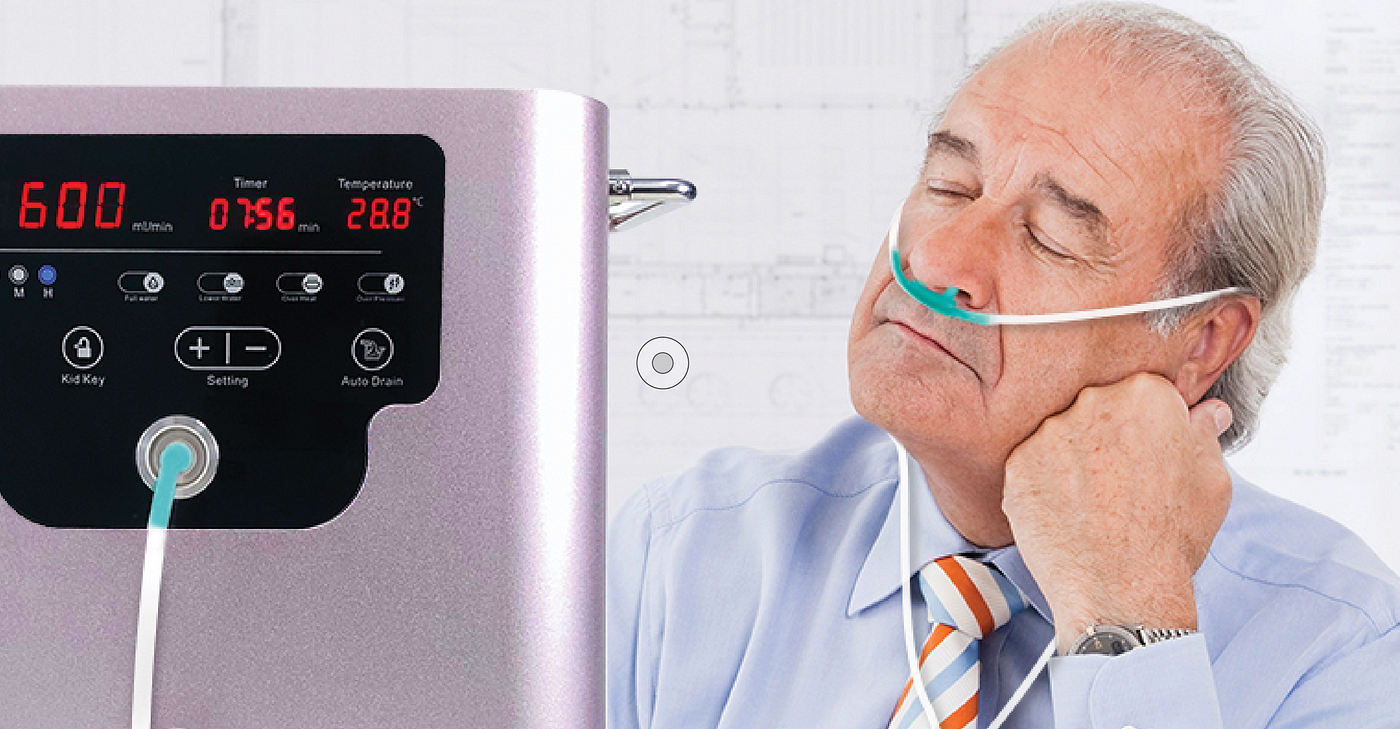 hydrogen inhaler
hydrogen inhaler
Hydrogen inhalers are devices designed to produce significant amounts of hydrogen gas, which is then transported via a silicone tube into a nasal cannula for inhalation. As previously discussed, hydrogen is a tiny molecule that can pass through specific silicone tubes’ walls. For example, transparent tubes are specifically designed for oxygen, a much larger molecule.
Hydrogen inhalers must generate a substantial volume of gas to ensure a strong enough flow reaches the lungs. This requirement leads to the production of larger and more expensive devices. However, the benefits derived from these devices are proportionate to their size and cost.
A 5-minute inhalation session with a hydrogen concentration of 125 mg/L is equivalent to consuming 2 liters of hydrogen water with a concentration of 2.5 ppm. The therapeutic effect of such large quantities of hydrogen is unparalleled by other devices, such as portable hydrogen water bottles or magnesium tablets.
Nevertheless, numerous studies have shown that some organs may benefit more from hydrogen water than inhalation. Fortunately, hydrogen inhalers can also infuse water, allowing users to enjoy the advantages of both methods.
In conclusion, hydrogen inhalers offer a powerful and versatile option for those seeking the therapeutic benefits of hydrogen gas. By combining inhalation and water infusion, these devices provide an unmatched level of hydrogen delivery for improved health and well-being.
HYDROGEN TABLETS
 Magnesium-based hydrogen tablets
Magnesium-based hydrogen tablets
Hydrogen tablets are a popular and convenient alternative for those looking to benefit from the therapeutic properties of molecular hydrogen without investing in more expensive devices such as hydrogen water bottles, inhalers, or pitchers. In this chapter, we will explore the advantages and limitations of hydrogen tablets and how they can be viable options for those seeking the health benefits of hydrogen.
How Hydrogen Tablets Work
Hydrogen tablets contain a blend of active ingredients, usually magnesium and other compounds, that react with water to produce hydrogen gas. A chemical reaction occurs when the tablet is dropped into a water container, releasing hydrogen gas that dissolves into the water. The resulting hydrogen-rich water can then be consumed, providing a source of molecular hydrogen to the body.
Advantages of Hydrogen Tablets
Convenience: Hydrogen tablets are portable and easy to use, making them a popular choice for those who want to incorporate hydrogen water into their daily routines without needing more expensive or complicated equipment.
Flexibility: Hydrogen tablets can be used with various types of water, including tap, filtered, or bottled water, allowing users to choose their preferred source.
 Hydrogen tablets can cause stomach disturbance and interaction with medication
Hydrogen tablets can cause stomach disturbance and interaction with medication
LIMITATIONS OF HYDROGEN TABLETS
Taste: Some users may find the taste of hydrogen water produced by tablets to be unpalatable, as the magnesium and other compounds used in the tablets can alter the taste of the water.
Stomach Disturbance and Medication Interaction: The magnesium and other components of hydrogen tablets can cause stomach disturbances and allergic reactions and interact with certain medications. It is crucial to consult a healthcare professional before using hydrogen tablets, especially if taking drugs or having a known sensitivity to magnesium or other ingredients.
Magnesium Dosage: Users are limited by the daily recommended dose of magnesium, which may restrict the amount of hydrogen water consumed from tablets.
Cost: In the long term, hydrogen tablets can be significantly higher than investing in a hydrogen generator, particularly for those who plan to consume hydrogen water multiple times daily. While hydrogen tablets may initially seem more affordable, their ongoing cost can accumulate quickly, as you’ll need to purchase new tablets regularly.
Therefore, a hydrogen generator may be a more cost-effective and efficient solution for those who plan to consume hydrogen water regularly and in the long term.
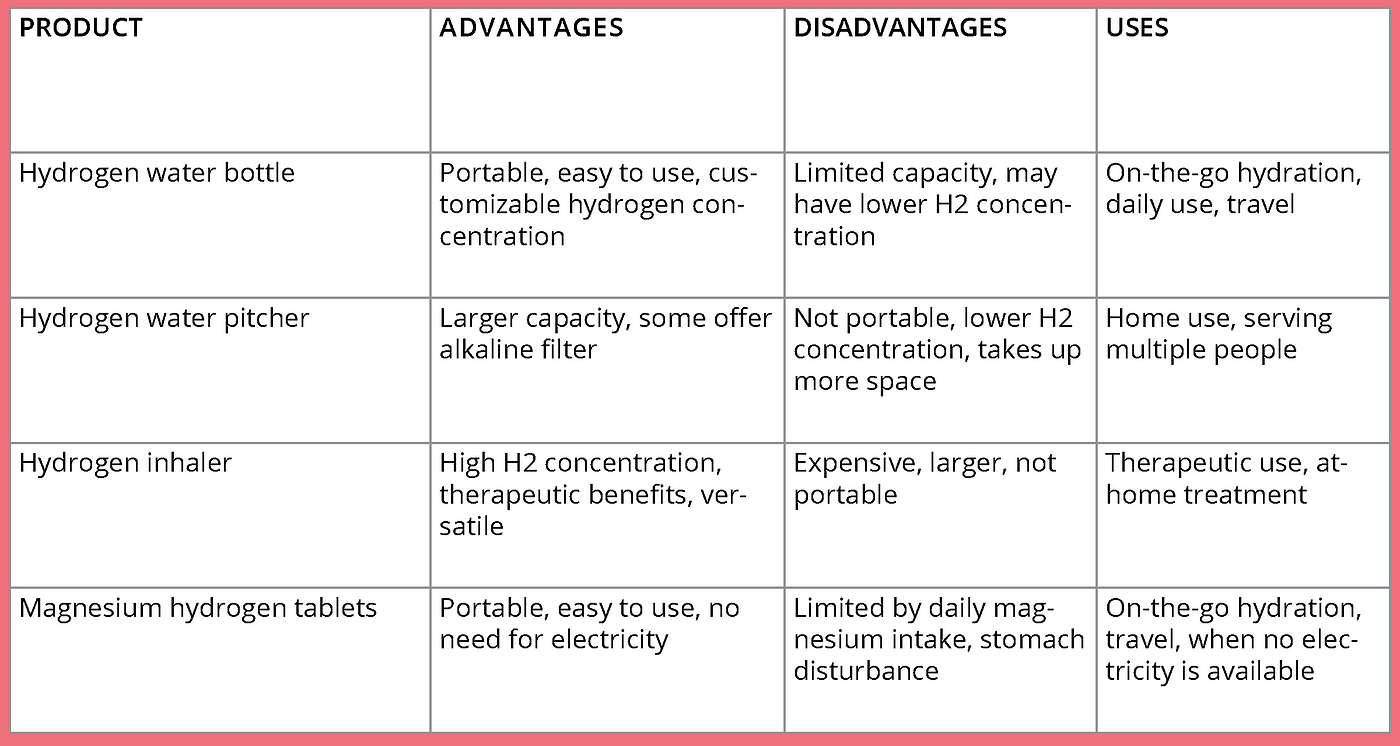 H2 products comparison table
H2 products comparison table
However, it is essential to consider individual preferences, needs, and financial circumstances when deciding which hydrogen delivery method is most suitable.
Conclusion
In conclusion, hydrogen water generators are a great way to get healthy drinking water. They work by using electrolysis to separate hydrogen and oxygen molecules, creating water that is rich in antioxidants and has many potential health benefits. By drinking hydrogen water regularly, you may be able to improve your energy levels, reduce inflammation, and even boost your immune system. So if you’re looking for a simple and effective way to improve your health, consider investing in a hydrogen water generator today!



